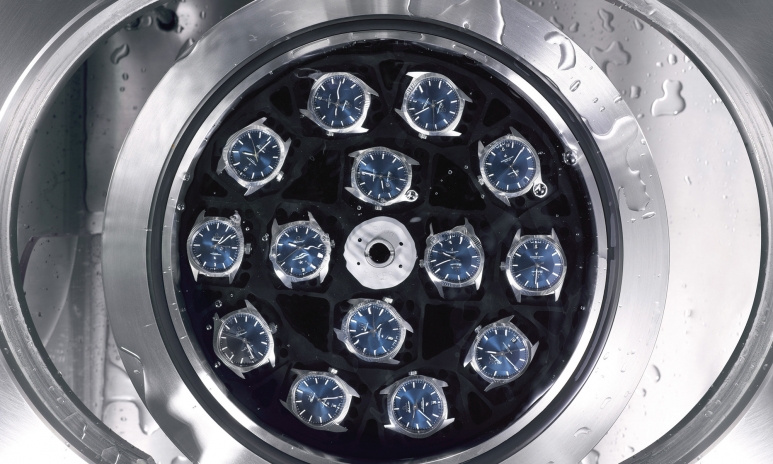Omega has embraced its Master Chronometer designation with almost 50 new models this year. Hong Kong Tatler's watch expert explains the methodology behind the ground-breaking certification

Whatever it is that attracts you to fine timepieces, you will want your watches to be as precise as possible. Watchmakers have often called on third parties, such as the Official Swiss Chronometer Testing Institute (COSC), to provide independent and unbiased testing and certification. Another you may be familiar with is the Geneva Seal; it’s somewhat different because it originally addressed production methodologies and specific finishing on mechanical movements alone, but it has been updated recently to address functional testing as well.
Other entities also exist to provide independent testing, but Omega found that none of them were capable of testing and certifying the extreme anti-magnetic technology it introduced in 2013 with the Seamaster Aqua Terra >15,000 gauss.

They are not set up to test to what extent a movement can resist the influence of magnetic fields. Given that the new Omega technology presented a quantum leap over existing approaches to magnetic resistance, this presented the watchmaker with a dilemma. While Omega was already submitting its movements for COSC certification, it realise there was an opportunity to provide clients with a new certification that would address not only magnetic resistance, but also other functional aspects of the entire watch.
It officially announced the Master Chronometer certification in 2015 and presented the new Omega Globemaster, which complied with the new standard. It worked with the Swiss Federal Institute of Metrology (Metas) to develop the testing methodology, which extends the usual precision testing to what it considers real-world conditions.

The testing starts with a COSC-certified movement, which is subjected at Metas to a 15,000-gauss magnetic field. The movement is then fitted to its case and retested for magnetic resistance. The testing continues for 24 hours, after which the watch’s chronometric precision is once again verified. The next phase is carried out over four days, with the watch placed in six different positions and in two different temperature zones, after which the average chronometric precision is recorded.
Then the power reserve is tested to ensure it meets the stated specifications for that particular watch. Another positional test is then carried out, but this one records the chronometric precision in each of the six positions. Then the testers return to the power reserve, this time recording the precision between 100 and 33 per cent of the reserve. Finally, the stated water resistance is tested.

To enable each owner to fully appreciate their watch’s advanced certification, Omega delivers each Master Chronometer with a card detailing how to access the full results of all the tests online.
The Master Chronometer certification is not exclusive to Omega; Metas is a Swiss federal institute and the certification is available to any watchmaker that wants to submit its timepieces for testing. However, given that a key component is the extreme magnetic resistance, it’s unlikely we will see many watchmakers lining up for this process any time soon.
Omega has declared that the majority of its mechanical watches will be certified Master Chronometer by 2020. It’s an ambitious goal, but one that Omega is pursuing with speed; following up the Globemaster Master Chronometer from 2015, this year has seen the introduction of six new Master Chronometer movements, ranging from an annual calendar (8922/8923), chronograph (9900/9901), chronograph with moon phase (9904/9905), a movement suited for diving watches (8800/8801), a small seconds (8704/8705), and a GMT (8906). These calibres have been fitted to 46 new models across the Globemaster, Speedmaster, Planet Ocean and Constellation collections.

The level-headed, real-world approach to the Master Chronometers is impressive. It’s not about the tremendously complex movements and dazzling hand finishing; Master Chronometer is about ensuring that the growth of the watchmaking industry, and of Omega’s collections, does not come at the expense of quality and reliability.
The development of extreme magnetic resistance is not merely an esoteric technical achievement; we are surrounded by magnets in daily life, in objects that we carry regularly in proximity to our watches.
Watch owners have often been caught off guard by placing their watches on tablet computers, whose protective covers are magnetically attached. Air travellers are required to walk through at least one metal detector—essentially giant magnets—when undergoing security checks. These are just two examples of the magnetic risks to mechanical watches in the real world that challenge laboratory testing regimes.
The Master Chronometer certification adds an augmented set of criteria that defines a new benchmark in quality and reliability befitting Omega’s stellar 168-year history.
This article was originally published in Hong Kong Tatler's June 2016 issue
